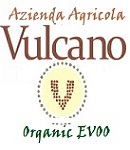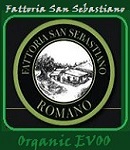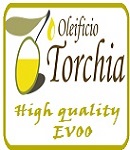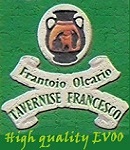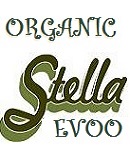Olive oil classification
By Domenico Russumanno
 Quality olive oil is not a simple commodity but a specialty product defined against a standard.Those standards include some sense of our own of what to expect, and how to taste it. Quality olive oil is not a simple commodity but a specialty product defined against a standard.Those standards include some sense of our own of what to expect, and how to taste it.
In 2009, consumers in USA and Canada used nearly 3.3 million hectoliters (one hectoliter equals 100 liters) of olive oil compared to 2.8 million in 2004 and 3.6 million forecasted by 2012-2013.
Like anything else, consumers need to know how to buy. Consumer demand for high-quality olive oil in Europe and in North America is skyrocketing.
On the other hand, there has been a strong downward pressure on olive-oil quality, especially among the big Europeans olive-oil traders and bottling companies who, unfortunately, seem to have strong political ties.
Instead of supporting small growers who make distinctive, premium oils, "certain" Europeans governments have consistently encouraged quantity over quality, to the benefit of large companies that sell and buy bulk oil, and that goes for north American importers too.
The Canadian Food Inspection Agency (CFIA) recently reported that, 15 of 45 samples of extra-virgin olive oil pulled from Canadian store shelves and tested in the agency’s laboratory in Ottawa over the previous year had been adulterated.
Will that change? We certainly hope so. For small growers, the backbone of the industry, olive oil production is a way of life, if they cant make a living at what they do best we will all loose. |
|
A story to tell in each drop.
 It is interesting to take a bottle of extra virgin olive oil and to know that in each drop there is a story to tell. It is interesting to take a bottle of extra virgin olive oil and to know that in each drop there is a story to tell.
This story is remembered and summarized through the label which is its identity card and also a business card of the producer who gets involved in first person!
Each bottle of oil contains the 'pressing' of a lot of olives, each one of them with a specific path, this path ensures that a product with specific features, summarized by its label, can reach the consumer.
We said that: " in each bottle, there is a story to tell": you can go backwards through this story, for example, through a code that many label reproduce. backwards through this story, for example, through a code that many label reproduce.
A series of numbers that allow us to trace the days when the oil mill transformed the olives in oil, and up to reach the single plantation of olive trees that made that certain batch of processed raw material.
For example, Unaprol (Italian Olive Consortium), to ensure a position in the market to the high-quality production,fostered a new labeling and traceability system according to UNI ENI ISO 22005:8 standard.
The label can contain and communicate to consumers, distributors and restaurateurs, large and more complete information concerning the product contained in the bottle.
Olive Oil Classification
Extra virgin olive oil is all the oil obtained from pressing the olives in the olive press. Based on the outcome of the evaluations of two criteria, ACIDITY and the PANEL TEST, it is classified as:
EXTRA VIRGIN OLIVE OIL - Extra virgin olive oil with an ACIDITY below 0.8 and a score of 6.5* or better on the PANEL TEST.
*The current law however makes exception for a lower PANEL score by one point; therefore, to be defined Extra Virgin it has gone down to 5.5.
VIRGIN OLIVE OIL - Virgin olive oil with an ACIDITY below 2.0 and a score of 5.5 or better. It may be bottled and sold as is but it is often mixed with other oils with a lower acidity in order to be sold as Extra Virgin.
“CORRENTE” VIRGIN OLIVE OIL - “Corrente or ordinary” virgin olive oil with an ACIDITY below 3.3 and a score of 3.5 or better.
It cannot be bottled and sold as is and therefore, as was similarly said for Virgin Olive oil, it is often mixed with other oils with a lower acidity in order to be sold as Extra Virgin.
“LAMPANTE” VIRGIN OLIVE OIL - “Lampante” virgin olive oil with an ACIDITY above 3.3 and a score of 3.5 or lower.
It cannot be bottled and sold as is and because of its poor sensorial characteristics and high acidity it must go through an industrial refining process.
OLIVE OIL - Olive oil is obtained by adding a minimum quantity of Virgin oil (Extra Virgin, Virgin or “corrente”) to refined oil. Its acidity can not be greater that 1.5
REFINED OLIVE OIL - Refined olive oil is obtained from poor quality Virgin oil (“Lampante” or “Corrente” oils) through an industrial refining process, during which the high acidity, colour, and unpleasant odours and tastes are removed.
Refined olive oil cannot be sold directly to consumers.
Its acidity cannot be greater than 0.5.
The PDO and PGI oils: PDO and PGI, respectively, Protected Designation of Origin and Protected Geographical Indication are synonyms of an attested quality of the oil and a specific geographical area and they are easily identified by the symbols estabilished by the European Community.
Bio-organic oil. Organic certification is the publics assurance that products have been grown and handled according to strict procedures without the use of persistent and toxic chemicals.
| Denomination |
Acidity % |
Production methods |
| Extra virgin olive oil -EVOO |
≤ 0,8 |
Extraction by mechanical means only |
| Virgin olive oil |
≤ 2,0 |
Extraction by mechanical means only |
| Lampante olive oil |
> 2,0 |
extraction with only mechanical methods, not for consumption. |
| Refined olive oil |
≤ 0,3 |
obtained from lampante olive oil and refined by physical and chemical methods |
| Olive oil composed of refined and virgin olive oils |
≤ 1,0 |
|
| Pomace oil |
|
from olive residues, extraction with the use of solvents |
| |
|
|
Retail grades in the United States from the USDA: As the United States is not a member, the IOC retail grades have no legal meaning in that country; terms such as "extra virgin" may be used without legal restrictions but as of October 25, 2010, the U.S. Standards for Grades of Olive Oil and Olive-Pomace Oil went into effect.
The U.S. Department of Agriculture (USDA) currently has a four-part grading of olive oil based on acidity, absence of defects, odor and flavor:
- U.S. Extra Virgin Olive Oil for oil with excellent flavor and odor and free fatty acid content of 0.8g per 100g (0.8%);
- U.S. Virgin Olive Oil for oil with reasonably good flavor and odor and free fatty acid content of not more than 2g per 100g (2%);
- U.S. Virgin Olive Oil Not Fit For Human Consumption Without Further Processing is a virgin oil of poor flavor and odor;
- U.S. Olive Oil is an oil mix of both virgin and refined oils;
- U.S. Refined Olive Oil is an oil made from refined oils with some restrictions on the processing
|
| RELATED TOPICS |
| REMINDER |
| You don't need EVOO for every dish |
| Looking for some good EVOO? |
Look for a place or origin, not a postal code.
Look for DOP certification on, say, Italian labels.
Avoid extra low prices.
You should be prepared to spend around $20/liter for real evoo--there are ranges of taste, of course, from fat and soft Greek or California to leaner Spanish or Italian, but the basic taste profile should be constant.
Look for an expiration date |
| Remember : in the Mediterranean area harvesting starts in November and runs until the end of January. |
| LOOKING FOR ITALIAN OLIVE OIL? |
|
If the label says" Packaged in Italy - Imported from Italy"- "Bottled in Italy"- Or it has an obvious Italian sounding name...most likely is not Italian.
Read the label |
| Basic Conversions |
•1 U.S. Gallon = 3.785 Liters = 128 Fl. Oz.
•1 Liter = 1,000 ml = 33.8 Fl. Oz.
Most common sizes for olive oil bottles
250 ml = 8.453506 fl.oz
500 ml = 16.907 fl.oz
750 ml = 25.3605169 fl.oz
One Lt = 33.8140226 fl.oz
 |
Italy is the second largest producer in Europe and the world of olive oil with a national average of more than 464 000 tons, two thirds of which is Extra Virgin and as many as 41 PDO and PGI denominations recognized by the EU.
Southern Italy alone produces almost 88% of Italy's total olive oil production, the leading regions of Apulia and Calabria produce 73% of Italy's total.
The olive is diffused in the mountains (2%), hills (53%) and 44% in the plains.
For the very characteristics of the plant, which requires a mild climate, the cultivation of olive trees in Italy is widespread in the central regions (19%) and South (80%), while in the north the production is more limited (2%).
The plants in production are about 170 million and farms dealing in the olivicoltura sector are more than one million.
Sale of olive oil (extra virgin and virgin), in South Italy, is mainly by direct sale from the grower/producer to the consumer.
This form of direct distribution is an important area of business for many small businesses spread throughout the territory.
|
European Olive Oil Producers Try New Label: Made in California.
Suddenly olive oil companies in Italy and Spain and distributors of European foods are introducing olive oils with a surprising new selling point: Made in California.
What’s going on? American and Australian olive oil producers have been playing hardball.
They’ve underwritten studies critical of imported oils, lobbied for new standards that make life harder for European producers and they’ve been all over the media to urge everyone to buy domestic...>>> |
Australian magazine exposes bad olive oil (And It’s Australian).
The reports from Modern Olives suggested, according to the broadcast, that Big Olive’s oils found on supermarket shelves were old, adulterated and unfit for consumption.
The consumer watchdog Choice found that : “ some imported oils did meet the requirements for extra virgin, while some Australian brands failed the acidity and organoleptic benchmarks for the classification".. >>> |
|
The standards are written to support an industry that is in the business of producing refined olive oil.
It is not in the interest of these refineries to clarify the grades or to educate consumers.
When asked at the 2008 American Oil Chemist Society why The COOC was encouraging California to adopt IOOC rules and standards, the then President of the California Olive Oil Council and President of California Olive Ranch, responded with one word, "POLITICS".
Mr Green later clarified his position by explaining that the NAOOA, (North American Olive Oil Association) had made it clear that they would block any attempts by COOC to create standards that were not in complete agreement with their own
|
|
| |
La vetrina ideale per promuovere i vostri prodotti e servizi sul mercato Nord Americano ma che potrebbe essere un punto di visibilità anche nei vari mercati internazionali.
AZIENDE - PRODUTTORI - STRUTTURE RICETTIVE - GUIDE TURISTICHE - TOUR OPERATORI
Ai nostri visitatori piace il Sud Italia, vuoi dire loro qualcosa?
Paesi di provenienza dei visitatori al nostro sito in ordine numerico
Stati Uniti - Canada - Italia - Gran Bretagna - Australia - China - Germania - Francia - Nuova Zelanda - Olanda
Coloro interessati ad inserire la loro attivita'/azienda/ nel sito
sono pregati di mettersi in contatto usando il modulo sottostante .
Per saperne di piu'...

|







